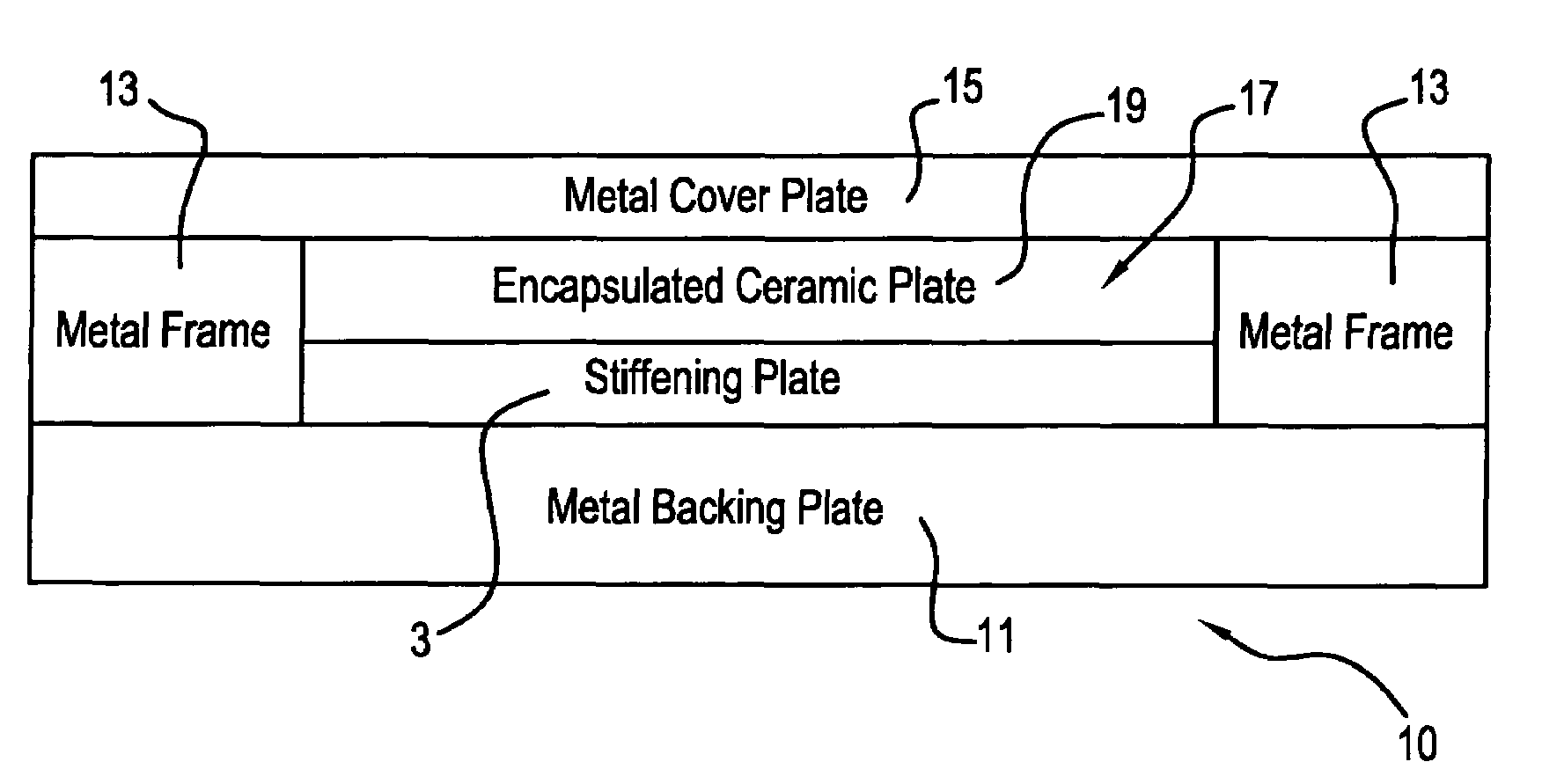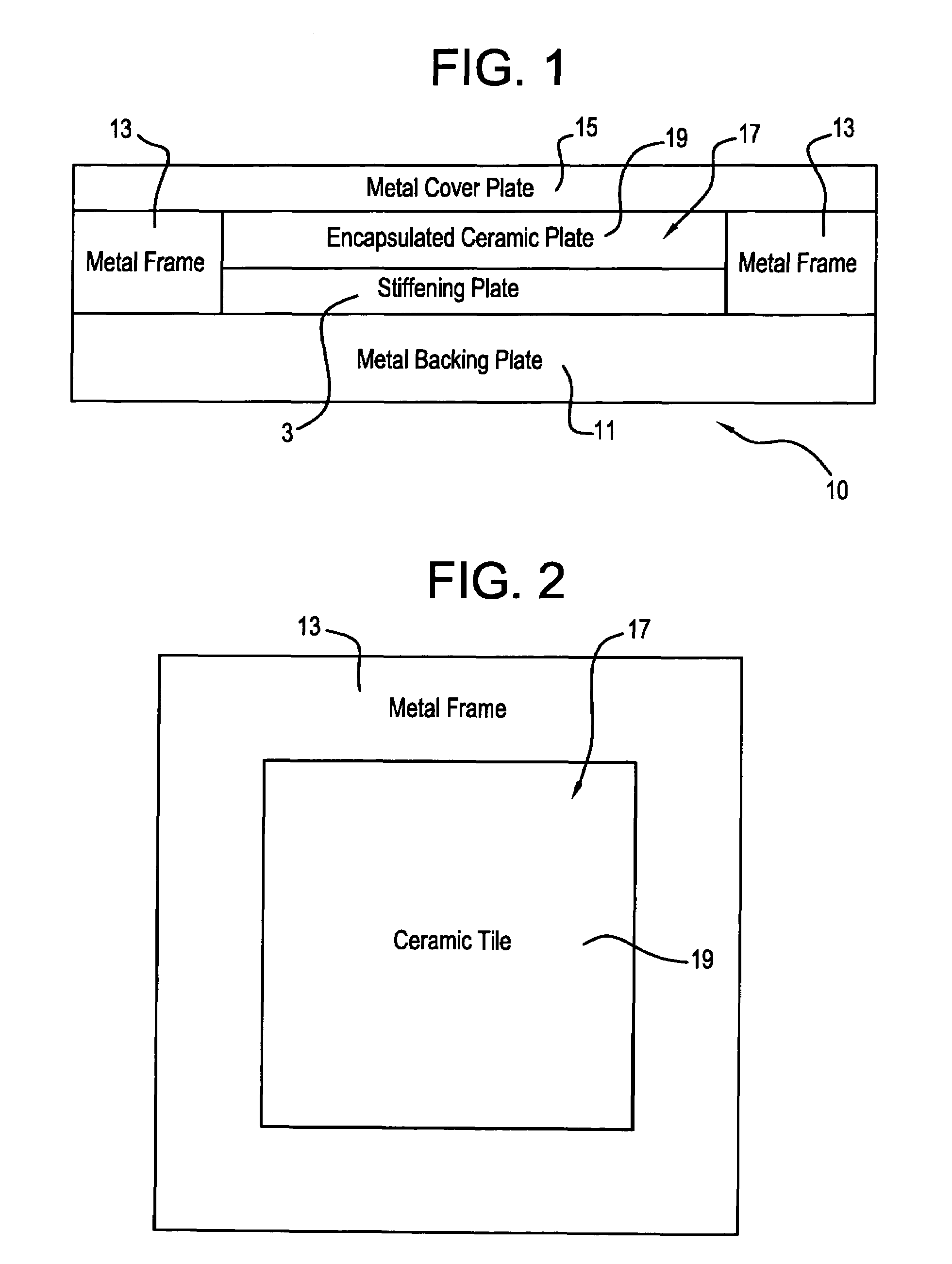Ceramic armor and method of making by encapsulation including use of a stiffening plate
a technology of encapsulation and ceramics, applied in the field of ceramic armor, can solve the problems of ineffective armor performance, failure to optimize the ballistic performance of armor, and the ineffectiveness of ceramic materials alon
- Summary
- Abstract
- Description
- Claims
- Application Information
AI Technical Summary
Benefits of technology
Problems solved by technology
Method used
Image
Examples
second embodiment
[0037]With reference to FIG. 3, the present invention is generally designated by the reference numeral 20 and is seen to include a backing plate 21, a middle plate 23, and a cover plate 25. The middle plate 23 has a plurality of cavities 27, 29, 31 and 33 formed therein through any desired manner including electrical discharge machining EDM processing or mechanical processing.
[0038]Ceramic tiles 35, 36, 37 and 39 and stiffening plates 38 are respectively received within the cavities 27, 29, 31 and 33, whereupon the cover plate 25 is placed thereover to encapsulate the ceramic tiles.
embodiment 40
[0039]With reference, now, to FIGS. 4–10, a further embodiment of the present invention is generally designated by the reference numeral 40 (see FIG. 10). The embodiment 40 includes a backing plate 41, a frame structure 43, and a cover plate 45. With reference to FIGS. 4–9, the manner of assembly of the frame structure 43 will be explained. With reference, first, to FIGS. 4 and 5, the frame structure 43 includes a backing plate 47 having a top surface 49 into which crossing grooves 51 and 53 are formed, of which the groove 51 is also seen in full lines in FIG. 5, and the groove 53 is shown in phantom therein.
[0040]With reference to FIGS. 6 and 7, a cross beam 55 has a bottom surface 57 inserted into the groove 51 and also includes an upper slot 59. With reference to FIGS. 8–9, a further cross beam 61 includes a bottom surface 63 designed to rest within the groove 53 and a slot 65 that is placed over the slot 59 in the beam 55 when assembled.
[0041]With reference to FIG. 10, the frame...
PUM
| Property | Measurement | Unit |
|---|---|---|
| elastic modulus | aaaaa | aaaaa |
| elastic modulus | aaaaa | aaaaa |
| elastic modulus | aaaaa | aaaaa |
Abstract
Description
Claims
Application Information
 Login to View More
Login to View More - R&D
- Intellectual Property
- Life Sciences
- Materials
- Tech Scout
- Unparalleled Data Quality
- Higher Quality Content
- 60% Fewer Hallucinations
Browse by: Latest US Patents, China's latest patents, Technical Efficacy Thesaurus, Application Domain, Technology Topic, Popular Technical Reports.
© 2025 PatSnap. All rights reserved.Legal|Privacy policy|Modern Slavery Act Transparency Statement|Sitemap|About US| Contact US: help@patsnap.com



